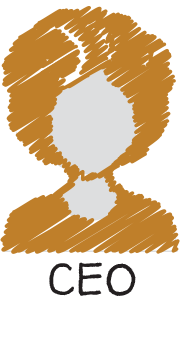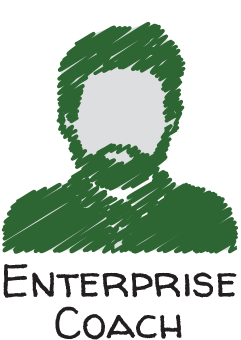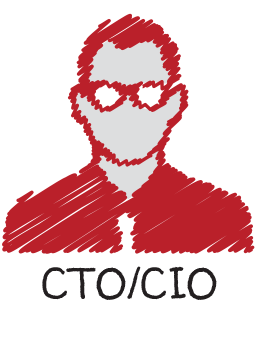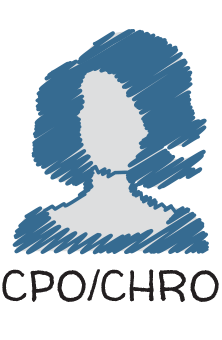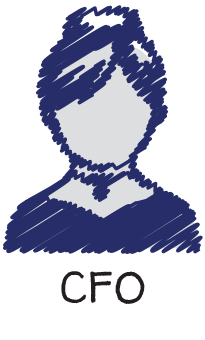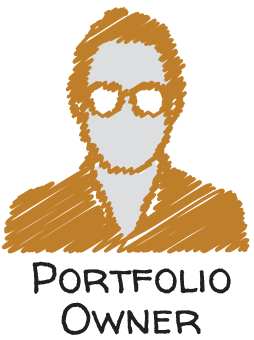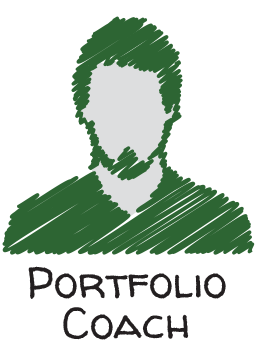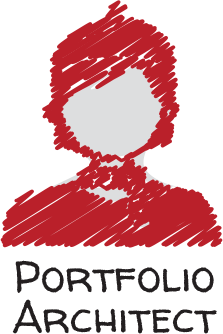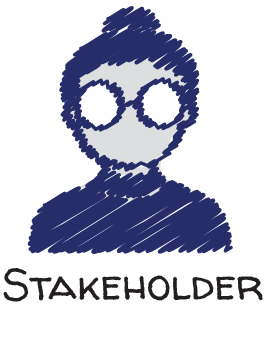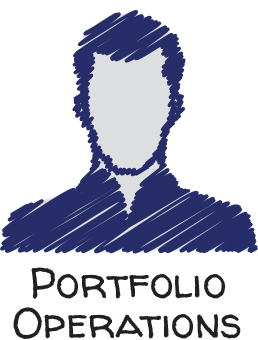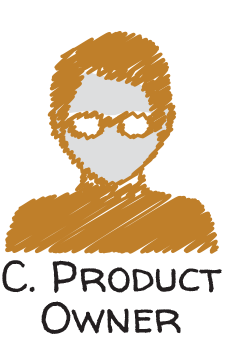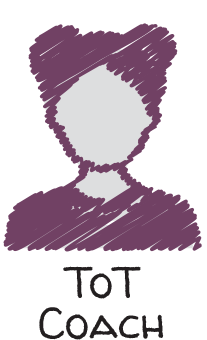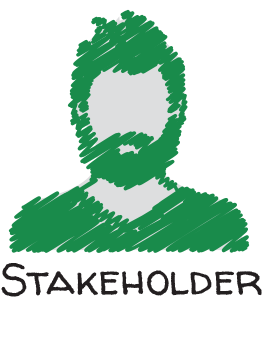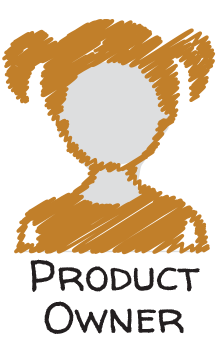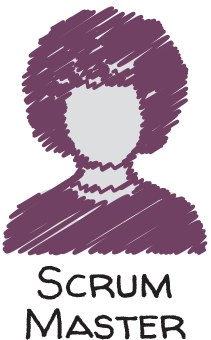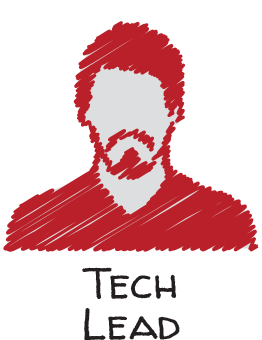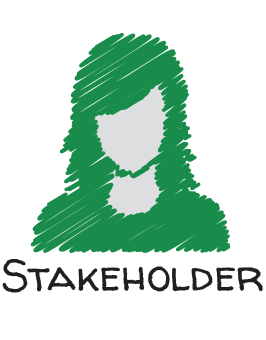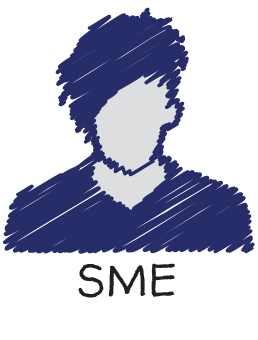The Integral Agile Approach
You understand that Agile and existing Agile Frameworks are missing key components required to be more complete. So do we.
The Integral Agile Approach is not another framework. It is a framework agnostic way of implementing Agile, created to address the pervasive challenges we face trying to successfully scale Agile.
The IA approach is not prescriptive. It can stand on its own, or it can seamlessly integrate with your existing scaled framework by adding those missing components that allow agility to scale organically and effectively.
We offer you new ways of looking at each process, role, and cadence and we help you to implement the solutions that make the most sense for your organization.
The IA approach can accelerate the flow of business value by revealing the root causes of the ongoing challenges that have persisted despite Agile's best efforts, including: the pain points teams have become numb to, misaligned cadences, siloed relationships, cultural resistance, and systemic wastes that are not immediately visible without an Integral full system view of your Agile organization.
The guide to the right breaks down your organization into its component parts and shows how to align these and how to achieve agility within and between them using a 4-quadrant perspective.
Click each icon to view the practice guide for each ceremony, and each holon title to view key roles and timelines.
Sprint planning
This session is the heartbeat of the iterative process at the team level.
The objective is to decide upon what will be delivered in the next iteration (if you’re using Scrum). Kanban teams who do not run in Sprints tend to pull from the top of the backlog as new items and priorities arise, but in many cases can also benefit from planning on a cadence of their choosing for work suitable for forward planning and to discuss capacity allocation.
- Values & Goals
- Do I have too much work?
- Do I know what I have to do?
- Product & Impact
- Prioritized sprint backlog
- Select stories to work on
- Team pulls the work
- Story task plan
- Achievable sprint plan
- Leadership & Culture
- Sprint Goal
- External team collaboration
- Effective communication
- Team commitment to sprint plan
- Markets & Environment
- Capacity planning
- Resources are available
Daily Stand Up
The main purpose of this meeting is to coordinate team efforts towards the iteration goal. Best practices suggest a brief (15 minute) meeting with anything outside the scope of daily coordination to be taken offline by the Scrum Master.
Examples of topics to be taken offline include:
- Design considerations (technical or product related)
- Strategy regarding removal of impediments
- Coordination with other teams
- Values & Goals
- What am I planning to do today?
- Do I feel confident about my work?
- Active listening
- Product & Impact
- What did I do yesterday?
- Discuss impediments
- Check burn down chart
- Completion of work
- Update task plan
- Leadership & Culture
- Am I fully present?
- Ask for help
- Provide updates
- Taking things offline (planning to meet later)
- Coordination to achieve sprint goal
- Markets & Environment
- Blocks/issues to resolve
- Update the Sprint plan
Backlog Refinement
This session ensures the team will be able to deliver the right things, at the right time, without getting blocked. The team and Product owner meet regularly to maintain a Detailed, Estimated, Emergent, and Prioritized backlog that meets a team’s Definition of READY, which is key to enabling the efficient creation of valuable products that delight customers.
Benefits of a healthy backlog include:
- Reduction of defects/improved quality
- Reduction of re-work
- The highest priority items get to the customer sooner
- Values & Goals
- Empowered Product Owner
- Engineer understands User Story
- Product & Impact
- Engaged Product Owner
- Prioritize Backlog
- Establish Planning Horizon
- Choose stories to refine
- Leadership & Culture
- Aligned to Product Vision
- Connected with the customer
- Team helps refine stories
- Partnership between Product & Tech
- Markets & Environment
- Definition of READY
- Dependency resolution
Retrospective
Continuous Improvement and the ability to adapt as things change is arguably the most important aspect of the Agile mindset. Retrospectives are open, honest sessions where team members, the Product Owner, and the Scrum Master share their experience of how the team is working together with ideas on how to better achieve their common goals.
The Retrospective should NEVER be skipped due to time constraints, and should always result in a tangible improvement plan that will be assessed for follow-through and impact at the beginning of the next Retrospective.
- Values & Goals
- How do I feel about the last Sprint?
- Individual accountability
- What can I do differently?
- Product & Impact
- What went well?
- What didn’t go well?
- Improvement actions/items
- Measurement of improvement impact
- Leadership & Culture
- What can we do differently?
- Open and honest intent
- Markets & Environment
- Team celebration choice/venue
Sprint Review
The Sprint Review occurs at the end of each small iterative cycle. Its main purpose is to solicit feedback so the team can remain focused on the goals as the landscape changes. Everyone benefits from taking a step back to celebrate the good work the whole team has done, and seeing the product emerge step by step builds engagement and a feeling of success for all participants.
- Values & Goals
- Speak to MY work
- Pride in my accomplishments
- Product & Impact
- Delivery of value/impact
- View of the emerging product
- Tracking towards business goals
- Leadership & Culture
- Customer/user feedback
- Team feedback
- Course correction (Priority & Learning)
- Markets & Environment
- Organizational/systemic learning
- Systemic value delivery
Quarterly Envisioning
This session defines the vision and objectives for the next quarter. It shifts the focus from OUTPUT to OUTCOMES. We know that there will always be more ideas than capacity to execute, and therefore there is always too much on the plate. Shifting the definition of success from “we delivered x amount of features to the market,” to “we made x impact on the world” allows the Team of Teams to look critically at the feature list and focus on those that will best advance the strategic objectives, and leave the rest as stretch goals.
The highest impact objectives are then aligned with those of other ToTs, as well as the annual objectives from Annual Lean Portfolio Management.
- Values & Goals
- Vision for the quarter
- Aligned to purpose
- Innovation mindset
- Willing to take risks
- Continuous improvement
- Product & Impact
- Quarterly OKRs
- Define Features
- Prioritization
- Metrics
- Feedback loops
- Update roadmaps
- Leadership & Culture
- Maintain or improve ToT culture
- Leader development
- Feedback from employees
- Open channels of communication
- Top to bottom alignment of purpose/vision
- Markets & Environment
- Capacity plan
- Explore flow improvements
- Sequencing of Team execution
- Hiring/talent acquisition
- Systems/equipment/real estate procurement/dissolution
- Promotions
- Understand market conditions
ToT Backlog Refinement (once a sprint, follow on to team refinement)
The Team of Teams Backlog Refinement session is led by the Chief Product Owner and attended by the Product Owners of all involved teams as well as any necessary SMEs. This should be held on the same day as the Team Backlog Refinement to properly align strategic and tactical decision making. The Product owner who facilitates the Team Backlog Refinement is a participant in the ToT backlog refinement and brings the full context of the team-level decisions to the ToT process. This key interconnection is critical to maintaining alignment between portfolio and team objectives.
- Values & Goals
- Vision for the Team
- Empowered team
- Committed team
- Properly skilled and resourced
- Product & Impact
- Write down features
- Make Features/Epics READY
- Prioritization
- Engaged Chief Product Owner
- Split into shell stories
- Planning horizon
- Acceptance/Success criteria
- Leadership & Culture
- Shared vision
- Cross-team collaboration
- Help other teams
- Product & tech perspectives
- Markets & Environment
- Feature level DoR
- Architectural/Systemic needs
- Dependency mitigation
Team of Teams Quarterly Planning
This session best resembles what Scrum calls Release Planning, or what SAFe calls PI Planning. Our recommendation is to come up with a high level execution plan with key dependencies, risks, and milestones clearly defined. It is not necessary to thoroughly plan more than the first 1-2 sprints as the later sprints will be best informed by the results of the first ones, allowing the teams to Respond to change vs follow a plan.
Business context, design, and architectural needs should be well understood by all teams, and used to inform the high level plan with the best available current knowledge.
- Values & Goals
- Team goals
- Cross functional
- Self organizing
- Self governing
- Supportive of other teams
- Proactive & creative culture
- Responsible
- Product & Impact
- ToT Working agreement
- Tooling that supports scale
- Scaled plan - optimize for flow
- Risk board
- User flows
- Architectural flows
- OKRs finalized and shared
- Roadmap
- Leadership & Culture
- Shared Scaled Goal
- External team collaboration
- Effective communication
- Commitment to scaled plan intent
- ToT Values
- Retrospect on planning
- Markets & Environment
- Capacity planning
- Resources are available
- Dependency mapping & mitigation
- Environments ready
Scrum of Scrums (twice a Sprint or as needed)
The Scrum of Scrums brings together the Scrum Masters from each of the teams in the ToT to collectively navigate the ever changing environment while collaborating on shared product goals. The primary objectives are
- Surfacing impediments and opportunities
- Working together to support/enable each other
- Escalating intractable issues to leadership.
The SoS will also often include representation from product or tech SMEs based on interest and need.
- Values & Goals
- Team morale
- Team purpose
- How is the team doing?
- Solution mindset
- Product & Impact
- Update other teams
- Update Agile tooling
- Release burn up chart
- Shift work to meet changing needs
- Surface impediments
- Leadership & Culture
- Teams collaborating with teams
- ToT shared purpose
- Provide updates
- Ask for help
- Markets & Environment
- Impediment reporting/removal
- Dependency tracking
- Capacity check in
ToT Demo/Review (once a month or as needed)
The objective of the Team of Teams review is to demonstrate completed, integrated functionality to your stakeholders, partners, and other teams. The ability to take a step back and see the product evolve incrementally builds a sense of group accomplishment while bringing new perspectives and ideas to the table. It is a critical opportunity to have an open conversation with your customers to get their feedback and better understand their needs.
- Values & Goals
- Demonstrate work by team
- Open to feedback
- Engaged & excited, pride in their work
- Product & Impact
- Demonstrate integrated functionality
- View of the emerging product
- Tracking towards business goals
- Leadership & Culture
- Customer/User feedback
- Team feedback (constructive)
- Course correction (Priority, Learning)
- Markets & Environment
- Value added to the system/product?
- Organizational/Systemic Learning
- Review delivery against plan
ToT Retrospective (once a month)
This session enables all collaborating teams to identify and respond to collective challenges and opportunities. The ToT retrospective is essential for building alignment across teams, establishing smooth working processes and building healthy relationships. We recommend holding both the team and ToT retrospectives on the same day, creating a half day dedicated to continuous improvement every month.
After the teams meet separately to gather their feedback, they gather in a larger session to identify common areas of improvement. Holding this offsite at a fun venue can be a great team building activity and help strengthen the bonds between teams.
- Values & Goals
- Team by team retro
- Team accountability
- Team learning
- Product & Impact
- Overall ToT retro
- Action Items to improve
- Measurement of action item impact
- Leadership & Culture
- What can we do differently at scale?
- Open and honest intent
- Teams share their experience
- Markets & Environment
- Team celebration choice/venue
ToT Systems Governance (once a sprint)
The actions taken in the Team of Teams holon in this session are identical to those in Organization Systems Governance, but on a smaller scale with narrower focus. This session is where the strategic and tactical meet. It enables teams to maintain architectural integrity while responding to the emergent needs of ongoing product development. The key objective is to provide a means for the teams to balance short term (immediate delivery needs) and long term (adaptation of new technologies and capabilities) needs while maintaining or improving quality and maintainability.
- Values & Goals
- Alignment to Vision/Future Search
- Subject matter expertise
- Focus on simplicity
- Focus on value add
- Customer centricity
- Product & Impact
- Architectural runway
- Choice of technology
- Systems training
- Pilot new ideas (POC)
- Reporting (outcomes)
- Reporting (systems)
- Leadership & Culture
- Train & mentor
- Understand company culture
- Support team's success
- Continuous improvement
- Take and respond to feedback
- Markets & Environment
- Reference architectures (best practices)
- Avoid silos
- Establish guard rails
- Allow for flexibility in design (emergent)
- Focus on enabling flow
- Deploy system experts to instruct (coach)
- Central document repository
- Design follows needs
- Appropriate robustness & performance
Product Coordination (once per sprint)
This session replaces the traditional status update around product delivery with something that is more centered on coordinating how to respond to new challenges and opportunities. Over the course of delivering any product, older ideas may no longer be as relevant, and anyone who has ever worked on delivering a product to the market has been frustrated by how to handle the discovery of new work. In addition to surfacing and removing impediments, establishing an objective means to prioritize new work against existing without blowing your capacity budget or burning out your teams is the key objective for this session. Progress towards goals should be measured inside an established, transparent Agile process, and does not require special reporting.
- Values & Goals
- Commitment to improvement
- Servant leader mindset
- Proactive, not reactive
- Value focused
- THINK, DECIDE, COMMIT
- Product & Impact
- Portfolio Kanban
- Raise impediments
- Raise discovered work with context
- How are my teams doing?
- What is our plan moving forward? (Leadership guidance)
- Release burn up per ToT & overall
- Update leadership Kanban board
- Leadership & Culture
- Coordination
- Provide updates
- Focus on root causes
- Trust & safety
- Taking things offline
- Ask for help
- Accountable & responsible
- Markets & Environment
- Impediment resolution
- Product governance
Annual Lean Portfolio Management
This session defines the portfolio strategy for the year - what is the impact we want to have on the world, and how can we continue to evolve our culture? This session will differ depending on whether you are a small to medium business or a large enterprise with multiple technology and business portfolios.
Small - Medium Business
The first order of business will be to define both the Long Term (3+ year) and annual objectives (or OKRs). Once these objectives are set, conversations about investment, allocation, and everything else necessary to meet those objectives can effectively take place.
Enterprise
In a large enterprise, the goal will be to align annual objectives with the Long Term objectives set by the enterprise as a whole. It is also critical for each portfolio to align with each other to ensure everyone is pulling in the same direction.
- Values & Goals
- Long term vision (3+ years)
- Annual Vision
- Portfolio purpose
- Innovation mindset
- Willing to take risks
- Continuous improvement
- Product & Impact
- Define 1year OKRs
- Define 3year OKRs
- Training plan
- Pro Forma Income statement (P&L)
- Define initiatives
- New product approval
- Update Customer Journeys & Experience
- Portfolio Kanban Board
- Leadership & Culture
- Assess portfolio culture
- Leader development
- Feedback from employees
- Open channels of communication
- Top to bottom alignment of purpose/vision
- Customer relationships
- Sense & Response culture
- Celebration of successes
- Markets & Environment
- Lean Budgeting (CapEX OPEX)
- Reorganize teams to enable optimal flow
- Update value stream map if necessary
- Hiring/talent acquisition
- Systems/equipment/real estate procurement/dissolution
- Promotions
- Understand market conditions
- Define Run, Grow, Transform %
- Target markets
Quarterly Lean Portfolio Management
Quarterly LPM sessions are designed to get feedback from leading and lagging indicators set by the annual objectives. The quality and speed of the response to new information will be a key differentiator in competitive advantage, both internally and externally. This includes but is not limited to: prioritizing new features, shifting capacity where its needed, changing people's experience at work, and any necessary team or cultural shifts to ensure alignment and maintain or improve morale.
- Values & Goals
- Vision for the quarter
- Aligned to purpose
- Innovation mindset
- Willing to take risks
- Continuous improvement
- Product & Impact
- Quarterly OKRs
- Define Features
- Prioritization
- Metrics
- Feedback loops
- Update roadmaps
- Benefits realization (QBR)
- SOWs
- Leadership & Culture
- Maintain or improve portfolio culture
- Leader development
- Feedback from employees
- Open channels of communication
- Top to bottom alignment of purpose/vision
- Markets & Environment
- Capacity plan
- Explore flow improvements
- Sequencing of ToT execution
- Hiring/talent acquisition
- Systems/equipment/real estate procurement/dissolution
- Promotions
- Understand market conditions
Portfolio Retrospective (once a month)
Retrospectives at this level are simultaneously focused on the health and success of the leadership team as well as the many people they both lead and impact. The creation of a continuous improvement culture starts with leaders leading by example, and uses the collective feedback from their colleagues to create the kind of working environment that enables people and the systems they work with to achieve their full potential.
- Values & Goals
- How do I feel about how we're doing?
- Individual accountability
- What can I do differently?
- Am I aligned to the vision?
- Open, humble mindset
- Value/impact focus
- Product & Impact
- What's going well?
- What's not going well?
- How is delivery going?
- Measurement of growth item impact
- Leadership & Culture
- Ask for help
- How can we improve?
- Open and honest intent
- Celebration of successes
- How are we perceived as leaders?
- Markets & Environment
- Growth Item backlog to improve/respond
- Portfolio acknowledgement/celebration
Process Governance (once a month)
Ok, let's change the tone here… has anyone in any role had a look at current processes and thought to themselves: "This is amazing! This is the most efficient and pleasurable, combination of process and tooling that strikes the perfect balance between clarity and accuracy of information, and ease of communicating and formatting said information? No, no one has ever said that sequence of words in any working environment. Process governance is all about taking an informed guess as to what will best suit a transparent, collaborative and accountable working environment, and tuning the process and tooling based on feedback from every role in your organization.
- Values & Goals
- Process objective
- Alignment to Vision/Future Search
- Subject matter expertise
- Focus on simplicity
- Focus on value add
- MVC (Minimal Viable Change)
- Systems thinking (avoid silos)
- Focus on enabling flow
- Product & Impact
- Choice of tooling
- Training sessions
- Test/Pilot new processes
- Work progress metrics
- Team health/productivity metrics
- Score cards
- Leadership & Culture
- Consult, coach, train & mentor
- Understand company cultural goals & values
- Support team's success
- Continuous improvement
- Take and respond to feedback
- Empowerment
- Celebration of successes
- Knowledge Sharing (succession plans)
- Markets & Environment
- Establish processes & systems
- Establish best practices
- Deploy process experts to instruct (coach)
- Focus on enabling flow
- Make impediments & dependencies easier to navigate (impact of problems)
- Establish guard rails
- Allow for flexibility in the process
- Development value streams to reduce waste
- Design follows needs
- Enable Quality
- MVC Journey
Systems Governance (once a month)
Balancing the immediate needs of the business with new capabilities that will be needed in the future with emergent technological advances while staying focused on delivery deadlines is quite the tightrope to walk. The purpose of this session is to define the architectural runway for the portfolio as a whole while taking in feedback from the teams to refine the strategy based on its application. Choosing and adapting the best technologies to enable the optimal flow of value requires an emergent, flexible design structure.
- Values & Goals
- Alignment to Vision/Future Search
- Subject matter expertise
- Focus on simplicity
- Focus on value add
- Customer centricity
- Product & Impact
- Architectural runway
- Choice of technology
- Systems training
- Pilot new ideas (POC)
- Reporting (outcomes)
- Reporting (systems)
- Leadership & Culture
- Train & mentor
- Understand company culture
- Support team's success
- Continuous improvement
- Take and respond to feedback
- Markets & Environment
- Reference architectures (best practices)
- Avoid silos
- Establish guard rails
- Allow for flexibility in design (emergent)
- Focus on enabling flow
- Deploy system experts to instruct (coach)
- Central document repository
- Design follows needs
- Appropriate robustness & performance
Envisioning & Elaborating Initiatives (DoR)
This process typically kicks off in earnest after annual objectives are set, and there’s a clear idea about the overall strategy for the upcoming year. After the list of ideas has been trimmed to a set that will fit into the known budget/capacity, initiative owners, their business teams, and their technology partners can get to work elaborating the solution. This often involves multiple design sessions, rapid prototyping to get early feedback, the testing of new technologies, establishing your key feature set (MVP), and the creation of a loose roadmap with an impact analysis. The objective is to bring the initiative to an established Definition of READY, where there’s general comfort and consensus around the value to be delivered, who needs to be involved, and the relative effort.
- Values & Goals
- Vision for the portfolio
- Empowered product team
- Commitment to improvement
- Properly skilled and resourced
- Proactive, not reactive
- Value focused
- THINK, DECIDE, COMMIT
- Focus on Objectives
- ROI focused
- Lean MVP mindset
- Product & Impact
- ROI
- Business case
- Prioritization
- Engaged Portfolio Owner
- Roadmap
- Create shell features
- Pricing strategy
- Portfolio Kanban
- Create personas
- Success criteria
- Pirate metrics (ARRRR)
- Leadership & Culture
- Aligned to portfolio vision
- Meaningful to the product team
- Product & tech perspectives
- Coordination
- Trust & safety
- Ask for help
- Accountable & responsible
- Connected with the customer
- Markets & Environment
- Performance ranges
- Market conditions
- External & Internal competitive analysis
- Marketing strategy
- Sales strategy
- Legal & Compliance
- Architectural/Systemic needs
- Dependency mitigation
- Improve refinement practice plan
- Establish training where necessary
- Explore possible need for technical uplift
- Impediment resolution
Long Term Planning (3+ Years)
This is an opportunity for executive officers and the board to reflect on all internal and external feedback and to establish or revise the long term objectives necessary to maintain competitive advantage and the overall health of the enterprise. Examples of feedback include changing technology and market conditions, product/portfolio performance against projections, employee surveys focused on enterprise culture, and the health and performance of the executive team.
- Values & Goals
- Long range vision (3+ years)
- Enterprise Purpose/Vision
- Innovation mindset
- Willing to take risks
- Continuous improvement & learning
- Product & Impact
- Define 3 year OKRs
- Rolling 3 year roadmap
- Leadership & Culture
- Aligned to portfolio vision & objectives
- Meaningful to the product team
- Product & tech perspectives
- Coordination
- Trust & safety
- Ask for help
- Accountable & responsible
- Connected with the customer
- Markets & Environment
- Performance ranges
- Market conditions
- External & Internal competitive analysis
- Marketing strategy
- Sales strategy
- Legal & Compliance
- Architectural/Systemic needs
- Dependency mitigation
- Improve refinement practice plan
- Establish training where necessary
- Explore possible need for technical uplift
- Impediment resolution
Enterprise Annual Planning
This session defines the enterprise strategy for the year - what is the impact we want to have on the world, and how can we continue to evolve our culture as a business? Similar to the Long Term Planning session, feedback is received from all directions and combined to create a cohesive strategy for the year. Following this session, the #1 priority is to ensure each portfolio area is aware of and aligned to the refined enterprise strategy.
- Values & Goals
- Long Term vision (3+ years)
- Annual Vision
- Enterprise Purpose/Vision
- Innovation mindset
- Willing to take risks
- Continuous improvement
- Product & Impact
- Opportunity identification
- Refine 3year OKRs
- Define 1year OKRs
- Pro Forma Income statement (P&L)
- Rolling 1 year roadmap
- Product approval/EOL
- Prioritization
- Enterprise Kanban Board
- Customer Journeys & Experience
- Consent Order
- Leadership & Culture
- Portfolio Context & Alignment
- Assess Enterprise culture
- Leader development
- Feedback from employees
- Open channels of communication
- Top to bottom alignment of purpose/vision
- Board approval
- Contractual Agreements
- Customer relationships
- Sense & Response culture
- Celebration of successes
- Markets & Environment
- Acquisition/Divestiture realization
- Enterprise investment/allocation
- Update value stream maps
- Hiring/talent management
- Systems/equipment/real estate procurement/dissolution
- Understand market conditions
- Target markets
- Distribution strategy/scorecard
- Enterprise Technology Business Management Strategy
- Enterprise Organizational architecture
- Global Legal, Compliance & Regulatory
Enterprise Coordination
The main purpose of this session is responding to change. Open channels of communication from top to bottom and back are essential so that leaders can respond to accurate, timely information. Creating and nurturing a culture of safety and transparency is paramount to getting accurate feedback and maintaining alignment across the enterprise.
- Values & Goals
- Vision for the quarter
- Aligned to purpose
- Innovation mindset
- Willing to take risks
- Continuous improvement
- Product & Impact
- Quarterly OKRs
- Benefits realization (QBR)
- Feedback loops
- Update roadmaps
- Update Customer Journey
- Updated prioritization
- Leadership & Culture
- Maintain or improve enterprise culture
- Leader development
- Feedback from employees
- Open channels of communication
- Top to bottom alignment of purpose/vision
- Customer relationships
- Sense & Response culture
- Celebration of successes
- Markets & Environment
- Enterprise Investment
- Hiring/talent management
- Systems/equipment/real estate procurement/dissolution
- Understand market conditions
- Target markets
- Distribution strategy/scorecard
- Enterprise Technology Business Management Strategy
- Enterprise Organizational architecture
- Global Legal, Compliance & Regulatory
- Adjust Reorganization Plans
Enterprise Retrospective (Twice a year)
The Enterprise Retrospective maintains the health of the executive team and its relationship with the board, while promoting a thriving culture based on innovation and strong values. Typically semi-annual, its cadence is driven by the length of the enterprise feedback loop needed to gather sufficient, actionable feedback in the particular organization.
- Values & Goals
- How do I feel about our direction?
- Individual accountability
- What can I do differently?
- Am I aligned to the vision?
- Open, humble mindset
- Value/impact focus
- Product & Impact
- What's going well?
- What's not going well?
- How are we tracking towards outcomes?
- Measurement of action item impact
- Leadership & Culture
- Ask for help
- How can we improve?
- Open and honest intent
- How are we operating as a team?
- How are we perceived as leaders?
- Perception of Wall Street (if public)
- Perception of our customers/public
- Celebration of successes
- Markets & Environment
- Growth Item backlog
- Organizational needs
Enterprise Process Governance (Once a month)
Choosing the ideal processes and tools enterprise wide often involves years of trial, error and adaptation. Striking the right balance between guard rails, flexibility, ease of collaboration, and metric based data integrity (as well as which metrics to follow!) requires continually engaging with teams to hear their pain points with existing processes and tools, mining that feedback to create the next Minimal Viable Change and measuring its impact.
- Values & Goals
- Process objective
- Alignment to Vision/Future Search
- Subject matter expertise
- Focus on simplicity
- Focus on value add
- MVC
- Systems thinking (avoid silos)
- Focus on enabling flow
- Product & Impact
- All collaboration tooling
- Training sessions
- Test/Pilot new processes
- Work progress metrics
- Team health/productivity metrics
- Score cards
- Leadership & Culture
- Consult, coach, train & mentor
- Understand company cultural goals & values
- Support team success
- Continuous improvement
- Take and respond to feedback
- Help create affinity & transparency enabling collaboration across LoBs
- Empowerment
- Celebration of successes
- Free sharing of knowledge (succession plans)
- Markets & Environment
- Establish processes & systems
- Establish best practices, guard rails & playbooks
- Deploy process experts (coach)
- Make impediments & dependencies easier to navigate
- Allow for flexibility in the process
- Map & design development value streams to enable flow
- Process design follows needs
- Enable Quality
- MVC change plans
Enterprise Systems Governance (Once a month)
Whether your enterprise is relatively new, built on modern technology, or its over a century old, balancing innovation with stability while enabling future business capabilities is an ongoing game of trade-offs. Enterprise Systems governance ensures that systems evolve in response to feedback from the portfolios and emerging technology while continuing to align with the long term architectural vision.
- Values & Goals
- Alignment to Vision/Future Search
- Subject matter expertise
- Focus on simplicity
- Focus on value add
- Customer centricity
- Systems thinking
- Lean mindset
- Product & Impact
- Catalogue of Enterprise Architectural Technology
- Architectural runway
- Systems training
- Pilot new ideas (POC)
- Reporting (outcomes)
- Reporting (systems)
- Leadership & Culture
- Consult, coach, train & mentor
- Understand company cultural goals & values
- Support team success
- Continuous improvement
- Take and respond to feedback
- Free sharing of knowledge (succession plans)
- Celebration of successes
- Systems thinking (avoid silos)
- Markets & Environment
- Reference architectures
- System procurement/dissolution & disaster recovery
- Establish guard rails
- Allow for flexibility in design
- Implement development value stream improvements to enable flow
- Deploy system experts (coach)
- Central document repository & SORs
- Design follows needs
- Meet vulnerability guidelines with appropriate robustness & performance
- Integration of industry standards & future innovations
Enterprise Business Strategy (Twice a year)
The highest level of pure Business Agility, this session focuses on experimentation, creativity, deep relationships with the customer base, and an innovation mindset. This is a pure brainstorming session that takes in feedback on market conditions, customer needs, internal capabilities, challenges and opportunities and generates possibilities to excite and delight. The frequency may vary depending on the length of the enterprise feedback loop needed to gather sufficient, actionable feedback in each organization but the ideal is to create a "tick, tock" cadence where a strategy is established and refined semiannually.
- Values & Goals
- Alignment to Vision
- Subject matter expertise
- Focus on value add
- Customer centricity
- Systems thinking
- Lean mindset
- Moral & ethical mindset
- Product & Impact
- Stock price
- Product performance & NPS
- Leadership & Culture
- Customer relationships & behavior
- Strategic relationships
- Brand perception
- Political relationships
- Wall Street Perception
- Competitive relationships
- Markets & Environment
- Market Analysis (opportunities & threats)
- Fiscal analysis & goals
- Customer base analysis (demographics)
- PR/Advertising plans
- Product families
- Enterprise capabilities
- Environmental & Humanitarian impact
- Advertising & marketing plans
- R&D
Individual Holon - Roles
Role definition is one of the biggest challenges currently faced in our ever changing environment. Finding and growing the right talent for the right role and enabling their success is the most important element to having a healthy organization.
A 4 Quadrant Perspective is necessary to fully grasp and execute the critical roles involved in having an effective and impactful Agile business and technology strategy.
Enterprise
Organization
Team of Teams
Team




